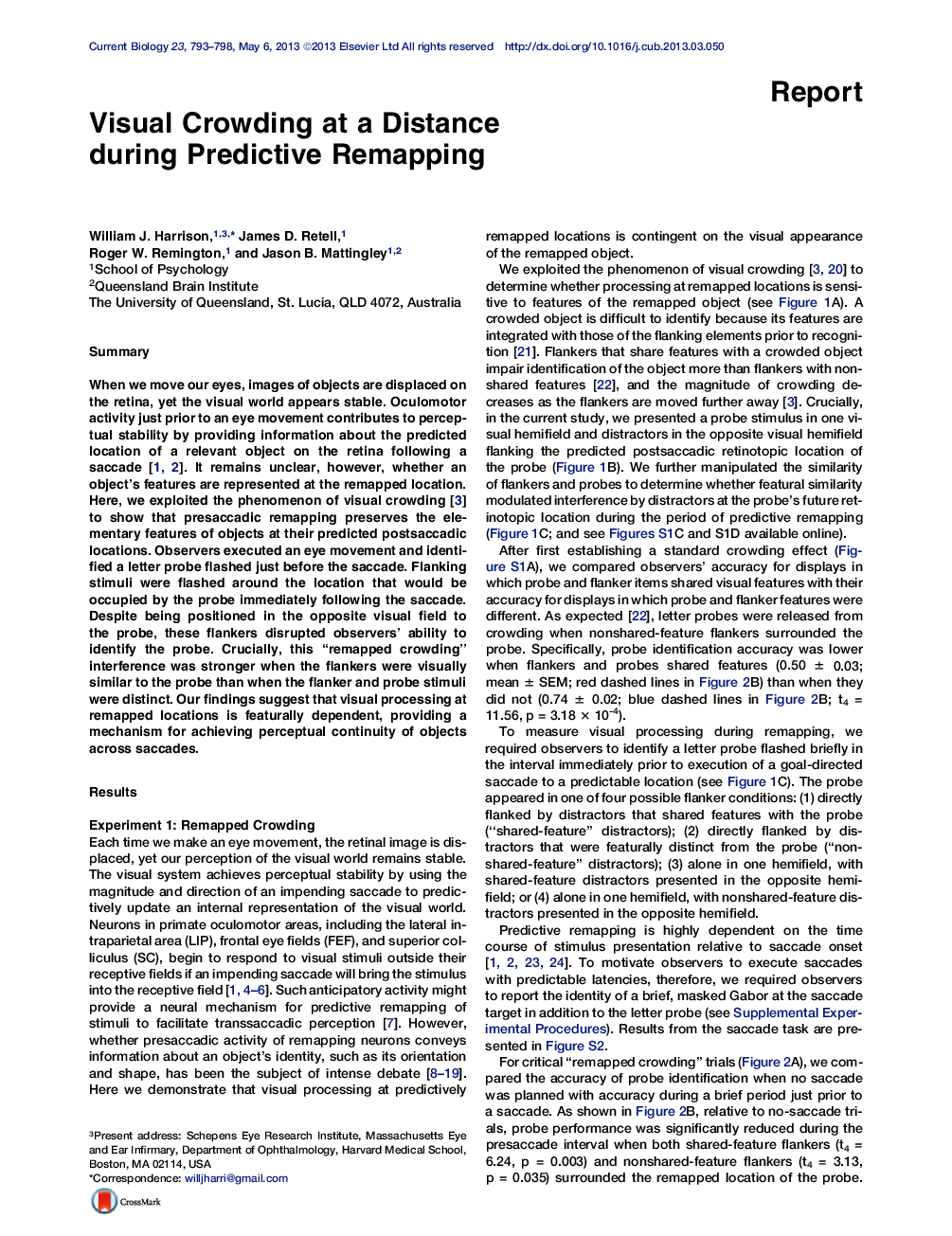| Article ID | Journal | Published Year | Pages | File Type |
|---|---|---|---|---|
| 2042772 | Current Biology | 2013 | 6 Pages |
SummaryWhen we move our eyes, images of objects are displaced on the retina, yet the visual world appears stable. Oculomotor activity just prior to an eye movement contributes to perceptual stability by providing information about the predicted location of a relevant object on the retina following a saccade [1 and 2]. It remains unclear, however, whether an object’s features are represented at the remapped location. Here, we exploited the phenomenon of visual crowding [3] to show that presaccadic remapping preserves the elementary features of objects at their predicted postsaccadic locations. Observers executed an eye movement and identified a letter probe flashed just before the saccade. Flanking stimuli were flashed around the location that would be occupied by the probe immediately following the saccade. Despite being positioned in the opposite visual field to the probe, these flankers disrupted observers’ ability to identify the probe. Crucially, this “remapped crowding” interference was stronger when the flankers were visually similar to the probe than when the flanker and probe stimuli were distinct. Our findings suggest that visual processing at remapped locations is featurally dependent, providing a mechanism for achieving perceptual continuity of objects across saccades.
► Visual crowding occurs across hemifields during the period of predictive remapping. ► The magnitude of such “remapped crowding” is sensitive to probe-flanker similarity. ► These findings suggest visual features are preserved during predictive remapping
